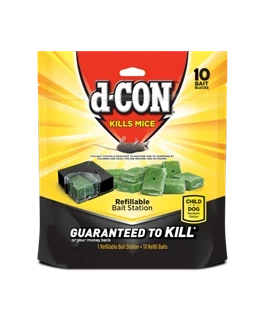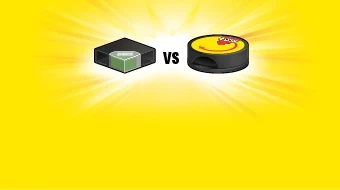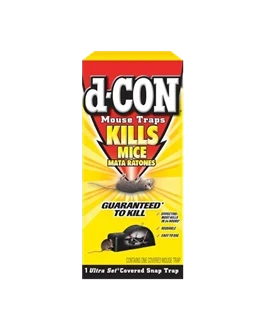Article
How d-CON Mouse Bait Works
One of the best ways to kill mice is with bait stations, but you’re probably wondering, what exactly is inside those devices?
- The active ingredient in d-Con bait blocks is Cholecalciferol which uses NO anti-coagulants or neurotoxins.
- This active ingredient isn’t the only thing in bait blocks: It’s blended with fat, flour and sugar to make it tempting to mice.
- d-Con refillable bait stations are resistant to tampering by children and dogs. The disposable version is child-resistant. If your pet accidentally eats the bait from this device, call your veterinarian or the toll-free number on the package for next steps.
- After mice eat the bait, they don’t die on the spot; they return to their nest.
- Tip: Check d-Con bait station’s clear window. If the bait hasn’t been gnawed, move the device to a new location.
- Typically, rodents begin to die about three days after feeding on the bait. Signs of infestation should disappear then, too.
- Nice to know: Because mice don’t die on the spot after eating the bait, you won’t have to deal with disposing of the dead pests.
Now you know just what’s inside a d-Con bait station -- and why it plays such a major role in keeping your home mouse-free.
Featuring

The learning center
Frequently Asked Questions
How many mice are in my house?
It can be difficult to tell exactly how many mice are in your house, which could range from a couple to a full-blown infestation. In short – the more signs you see, the more mice there are likely to be. If you actually see a mouse in the flesh, this is usually a sign that there are more nesting in your home.
Does one mouse mean an infestation?
One mouse doesn’t necessarily mean an infestation and it’s possible that you’ve only got a couple living under your roof – for now.
It’s important to remember that a few mice can turn into many due to their high rate of breeding, so if you notice any signs of mouse activity at all, make sure you get on top of the problem quickly with our no-mess Corner Fit Bait Stations.
How to tell if Mice are Gone
Once you’ve tackled your mouse problem you should know they’re gone simply by monitoring the signs that told you they were there in the first place. Over time you should notice that there are no more droppings, and all scratching sounds should have totally stopped. If you’re using bait stations, look out for signs that they’re working by checking for nibble marks on the actual bait, as well as by sprinkling flour around the station and watching out for footprints.
No one likes to think of having mice in their home but, unfortunately, it’s incredibly common. Read our hub of articles for more top tips and tricks about dealing with rodents in the home, including our article about the mouse’s bigger, scarier friend, ‘signs you have rats in your home’!




